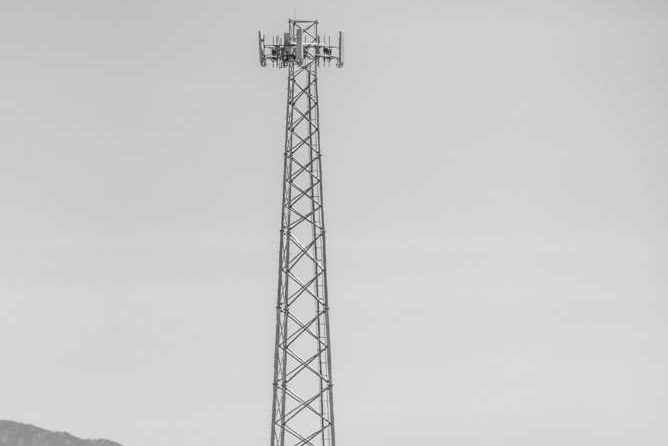By Tricia Toney, Photo by Matt Lit
By Tricia Toney
Nine residents of Villa Grove have won a significant court ruling against the approval of a conditional land use permit that allowed Viaero Wireless to construct a new cell tower near the town center. The lawsuit, spearheaded by retired teacher Paula Maez and Reverend Marquita Oliver, argued that county commissioners were misinformed about their legal authority over the permit. This misunderstanding, influenced by legal counsel and compounded by ex parte communication rules, ultimately led to a costly lawsuit.
Initial land use application and resident concerns
In April 2024, residents living within 2,500 feet of the proposed site received a notification from Saguache County Land Use about the permit application. Concerned locals raised objections at a May 30 Planning Commission meeting, citing the Saguache County Land Development Code. They believed their opposition would result in a recommendation against approval of the permit to build the cell tower. Instead, the Planning Commission endorsed the permit.
This decision prompted Maez to research legal precedents regarding rural land use for telecommunications towers. She discovered that the burden of proof was on the applicant to demonstrate the tower’s necessity, and compatibility with the existing landscape. However, a key obstacle emerged: ex parte communication restrictions prevented her from conveying these findings directly to county commissioners before the public hearing.
The role of ex parte in miscommunication
Ex parte communication rules are designed to ensure impartiality by prohibiting government officials from considering outside information before making judicial decisions. In this case, however, the restriction created an unintended consequence. Commissioners only had access to official legal advice, which erroneously suggested that federal regulations entirely overrode their authority to deny the permit.
Only two of the three commissioners read the written objections submitted by Villa Grove residents. These letters arrived just days before the crucial June 18 meeting. Without knowledge of the faulty legal guidance, the letters said nothing about jurisdiction, but, rather, focused on the Land Use Codes.
The pivotal June 18 meeting and the vote
At the June 18 public hearing, County Attorney Brad Crowell explained that the Telecommunications Act of 1996 and Colorado House Bill 1193 left no room for local discretion. Maez and other residents “felt blind-sided by” what Crowell was saying.
The jurisdiction question hadn’t come up in the research they had done. No one from the county had mentioned it. People focused their objections on zoning, property values, and aesthetic concerns — issues they believed were within the county’s authority to consider.
Kyle DeNardo, Site Acquisition Specialist for Viaero, said nothing to refute the message after Attorney Brad Crowell explained to the crowd that this matter fell under FTC (federal) laws, and was not within the county’s jurisdiction.
Exacerbating the situation was the misunderstanding about the time frame for the ruling on the application.
Counties have 90 days from the date of receipt of an application to approve changes to an existing cell tower (co-location). This was the “shot clock” the Commissioners believed they were under.
Commissioner Liza Marron asked DeNardo if he would be willing to extend the time frame of the application to allow time for a site visit as requested by Villa Grove residents. DeNardo said no to that request.
The actual legal time frame for a ruling (for construction) was 150 days from the initial application, meaning there was no need for his permission to extend the deadline, as it was still two months away.
Maez said she desperately wanted to say this. She raised her hand. She tried to interrupt. But the time for public comment was over and Maez said her attempt at input was ignored.
Commissioner Marron, the only dissenting vote, later stated: “I wanted to do the right thing by my constituents, even if there were risks involved.”
Legal challenge and court ruling
Since unincorporated private citizens lack an administrative appeals process, the only recourse was a lawsuit. The plaintiffs filed their case in Saguache District Court, arguing that the county had misapplied federal law and failed to consider local zoning regulations.
On Feb. 5, 2025, District Court Judge Amanda Hopkins ruled in favor of the residents, finding that the commissioners had misinterpreted their authority. Federal law does not remove local government oversight of telecommunications construction. It does, however, have stricter rules about approvals for co-locations, the practice of upgrading or adding another service provider to an existing tower.
The ruling vacated the land use permit and required the county to reconsider the application in compliance with local land use codes.
Judge Hopkins emphasized that concerns about aesthetics, property values and land use compatibility were valid considerations. The ruling also clarified that the county was not under an immediate legal threat from the federal government, as it was the applicant — not federal authorities — who could challenge delays in court.
Financial and community impact
The lawsuit cost Villa Grove residents more than $15,000 in legal fees. While they succeeded in nullifying the permit approval, the fully-constructed tower, power station and fencing remain standing but inactive.
The case highlights how procedural barriers like ex parte communication, though well-intended, can lead to serious miscommunication and legal missteps.
Maez said she believes if the commissioners had been able to speak freely with their constituents and reveal the legal quandary they believed they were facing, the lawsuit — and its financial burden — could have been avoided.
Next steps and lingering uncertainty
The land use permit application now returns to the Saguache County Land Use Office for reconsideration. Viaero will present its case again at the March 27 planning commission meeting. That board will make a new recommendation to the commissioners. County officials will also conduct a site visit — something denied during the initial process. The issue will be back in front of the commissioners in April.
Maez said she understands that commissioners have many complicated issues on their agenda at all times and added that she also understands that they were acting under incorrect information. But this time, she said, she will be very angry if they rule in favor of allowing the tower to remain.
-30-

